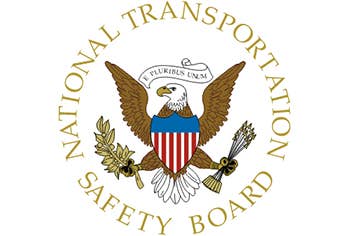
NTSB seal NTSB
The following is an excerpt from official NTSB summaries of general aviation accidents in the United States.
NTSB investigators either traveled in support of this investigation or conducted a significant amount of investigative work without any travel, and used data obtained from various sources to prepare this aircraft accident report.
Piper PA-32
Cuba, Missouri/Injuries: 1 Fatal
The private pilot was conducting a personal cross-country flight and had filed an instrument flight rules flight plan. The flight was en route to the destination airport, and the pilot was in radar and radio contact with air traffic control (ATC) personnel. While the airplane was in cruise flight at 5,000 feet mean sea level, the pilot checked in with an air traffic controller who alerted the pilot of “moderate to extreme precipitation” 50 miles ahead and about 30 miles in diameter. The pilot acknowledged the information and stated that he would maintain communications with ATC and that he had “a scope onboard.” About 30 minutes later, the pilot reported to the controller that he was in the middle of the precipitation and was not experiencing any bumps. He also stated that his weather scope was showing some returns right of his position. About one minute later, radar contact with the airplane was lost, and despite multiple attempts, the controller was unable to make radio contact with the pilot. One witness reported that the airplane emerged from the clouds and that one wing had separated from the airplane before impact. Another witness reported observing the airplane above the tree line with pieces of the airplane falling toward the ground as the airplane spun and descended until impact.
Post-accident examination of the engine and airframe revealed no pre-impact mechanical malfunctions or anomalies that would have precluded normal operation. The wreckage distribution and signatures and the witnesses’ reports were consistent with an in-flight breakup. A review of the weather and radar data showed that, during the final moments of the flight, the airplane made a right, descending turn near an area of moderate-to-high thunderstorm activity, which can include extreme updrafts and downdrafts. Although the turn did not occur within a convective storm cell, it occurred in an area that would have been very dynamic and surrounded by hazardous weather conditions. This encounter with thunderstorm activity likely led to the pilot’s loss of airplane control and the exceedance of the airplane's design limits and its subsequent in-flight breakup. Further, based on the pilot’s communication with the air traffic controller, he was attempting to use onboard weather radar to maneuver through an area of storms that he should not have been flying through in the first place.
Probable cause(s): The pilot's continued flight into thunderstorm activity, which resulted in his loss of airplane control, the exceedance of the airplane's design limits, and its subsequent in-flight breakup. Contributing to the accident was the pilot's reliance on onboard weather equipment to navigate through severe weather.

Sign-up for newsletters & special offers!
Get the latest FLYING stories & special offers delivered directly to your inbox






